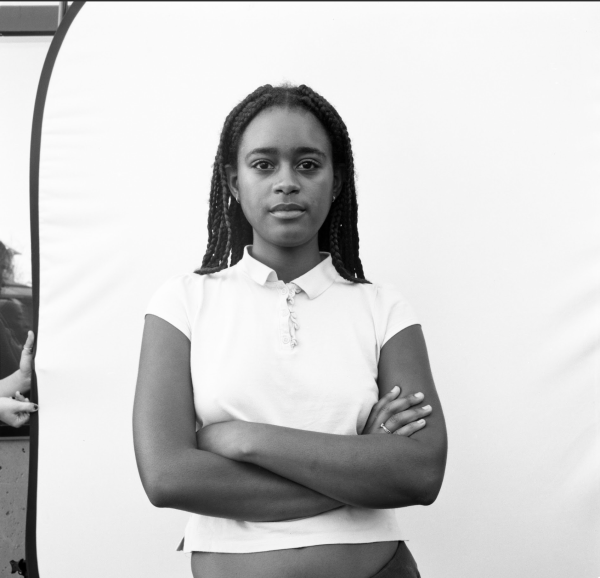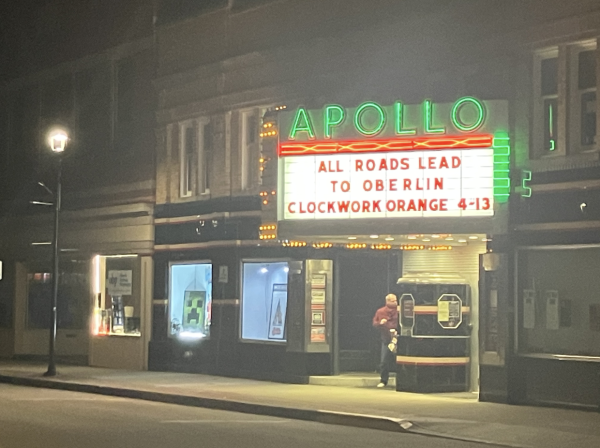Guggenheim Award Latest Step in Albright’s Storied Career
If you saw this year’s Spring Back performance or have attended a Contact Improvisation jam — either the weekly events or last Sunday’s special 12-hour jam — chances are you have encountered Professor and Chair of Dance Ann Cooper Albright.
On April 9 of this year, Albright was awarded a fellowship by the John Simon Guggenheim Memorial Foundation, one of the most prestigious grants possible for work in the arts. There are typically over 3,000 applicants for the award every year, whose work is then reviewed by peers in their field. Albright was one of 168 candidates selected to receive a grant in 2019.
The Guggenheim rewards careers that exhibit thoughtful and impressive trajectories, with a look to future projects that would continue that reach. Applying for a grant was a practical choice for Albright, though — she had a project she wanted to work on.
“If you want to create a situation where you get a year paid leave [at Oberlin], you can apply for research status,” she explained. “In order to apply for research status, you have to apply to at least two sources outside the College.”
This particular accolade is historically awarded mid-career — but this also means the application process is a rigorous one, and attracts many qualified applicants.
“The thing that’s different about a Guggenheim, which is kind of interesting, is that it also requires a career narrative,” Albright said. “And the career narrative is pretty hard to write, actually. It’s not, like, easy, it’s not just … ‘Here’s my CV.’ It has to have some kind of conceptual depth to it.”
Albright’s career treads two lines often presented as opposing — body and mind. Working on her Guggenheim application and then winning the grant validated her belief in the fortitude of these intersections — the foundation’s president told her that he appreciated how her work combines theory and practice. This assessment was icing on the cake for her.
“Somewhere along the way, philosophy and dance leaned into one another, beginning a duet that would lead to a life spent thinking and moving,” she read to me from the career narrative she had written.
Albright’s students share this assessment.
“In response to the College’s shift to ‘job readiness,’ she once explained the value of her classes,” College junior Zach Arfa, a Dance minor, wrote in an email to the Review. “She told us that the skills we’re learning are for when you’re 45 and you get fired from your job the same week you get divorced. Learning to survive and navigate in disorientation and suspension are critical to dealing with huge life changes. [Albright] is incredible at connecting the physical practices we learn to the real life implications that they have.”
These real life applications were critical for another longtime student of hers, College senior Charlotte Andrews.
“[Albright] emphasizes the importance of falling and risk-taking physically, but also in all components of one’s life,” Andrews wrote in an email to the Review. “Because of [Albright], I trust myself to be able to improvise and land safely when I fall on the dance floor, but she has also helped me improvise and land safely in the face of rejection letters for summer internships, finding new possibilities where I thought there were none.”
In addition to being Dance department chair, Albright is the president of the Society of Dance History Scholars and the creator of Oberlin’s Girls in Motion program, which has been active for 14 years. She’s also a frequently-published scholar, a mother, and an active teacher in the studio each semester. Albright has authored seven books, five of which were solo endeavors and two of which were collaborative anthology works.
Albright’s most recent book, How to Land: Finding Ground in an Unstable World, was released just last year. Analyzing technological disembodiment in a post-9/11 world, Albright examines the phenomenon of falling in our culture and the effect it has on our experience living in our bodies. In a review, MacArthur fellow Liz Lerman describes the book as a “startling awakening to the possibilities of living more deeply with our body as guide, host, and generator of sensation and ideas.”
This book also includes inserts of movement exercises for readers to try out, which Albright tested with her Varsity Contact class last year. And as anyone who’s taken a class of hers knows, Albright’s philosophies are the underpinnings of the movement skills she teaches.
“After taking several of her classes, it was such a joy to read the fully fleshed-out and articulated versions of the ideas she teaches,” Arfa wrote. “For me, the book feels very personal because I can imagine her telling me those things, and I can feel her words resonate through my body and the practices she’s taught me.”
Kate Trapnell, a College senior and fellow member of the Varsity Contact class, agreed.
“Exercises like Authentic Movement, where we try to move from impulses in our body rather than preconceived ideas about movement, have allowed me new ways of understanding and expressing myself, and helped me break movement patterns,” she wrote in an email to the Review. “So much of [contact improvisation] involves listening: listening to yourself, to your partners, to people around you. This is a skill that [Albright] has helped us tune into and practice, and I’m very grateful for her focus on that.”
Albright’s next project will, as some of her others have in the past, focus on a particular figure — in this case, the dancer and writer Simone Forti. Forti is renowned for creating improvisational structures now lauded as groundbreaking, and combining improvisational dance and sound with critical thought, analysis, and written word. Albright is interested in the less-investigated aspects of Forti’s life and history — she plans to call the project Simone Forti: Improvising a Life.
“The Museum of Modern Art in New York contacted [Forti] about buying her dance constructions, which were all improvisational scores that are written about in a handbook she published in the ’70s, like the huddle,” Albright explained.
The huddle is a contact improvisation score where dancers form a kind of football huddle and then climb out of it and on top of it, rolling off to rejoin the huddle once more.
“That’s a score millions of people do, but somehow now MOMA owns it,” Albright said. She sees these conundrums over staging rights as an interesting lens through which to examine the ownership of dance art and improvised movement.
“The history of Simone Forti’s work is woven into my body and my scholarship,” Albright explained in her proposal to the Guggenheim Foundation. “This project draws on my extensive teaching and writing about contemporary improvisation as an ephemeral form of dancing that can nonetheless be described, historicized, and theorized. While I was living and studying in New York City in the mid-’80s, I frequently took workshops with Forti. I have hosted her twice at Oberlin, once for a month-long workshop on ‘Logomotion,’ and most recently for a short residency in December 2015.”
The Guggenheim, as the practice of writing does, affords the opportunity to look back and become aware of how the past moves us into the future. That wasn’t lost on Albright.
“For me, the significant thing about the Guggenheim — besides the fact that it’s a once-in-a-lifetime grant, you can’t get it more than once — the thing that’s really sweet for me is that they take an ad out in The New York Times and they publish who they gave the Guggenheim to in The New York Times,” she said. “And my parents were such avid New York Times readers. I just think back and think, ‘Oh, they would have been so happy to have their daughter’s name in The New York Times.’ That made it real.”
Albright will be on sabbatical next year, working on Simone Forti: Improvising a Life.








